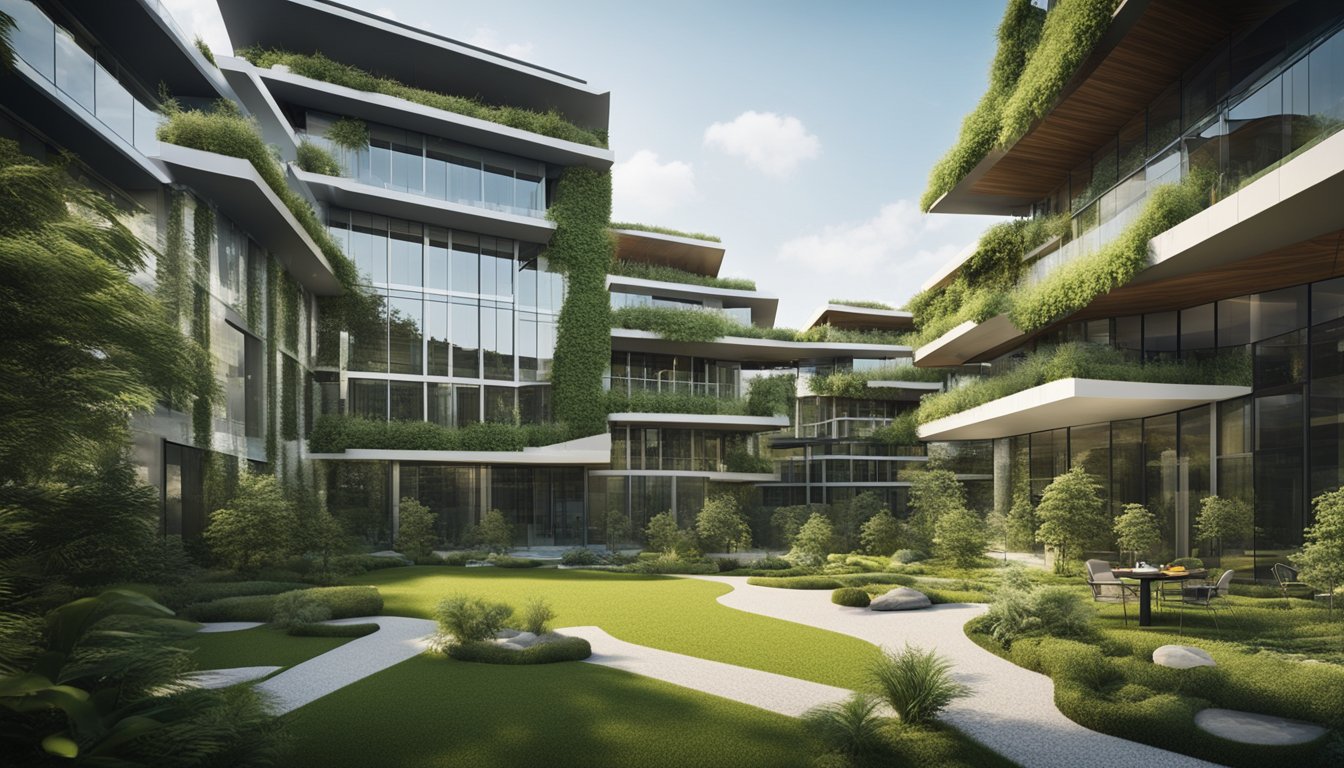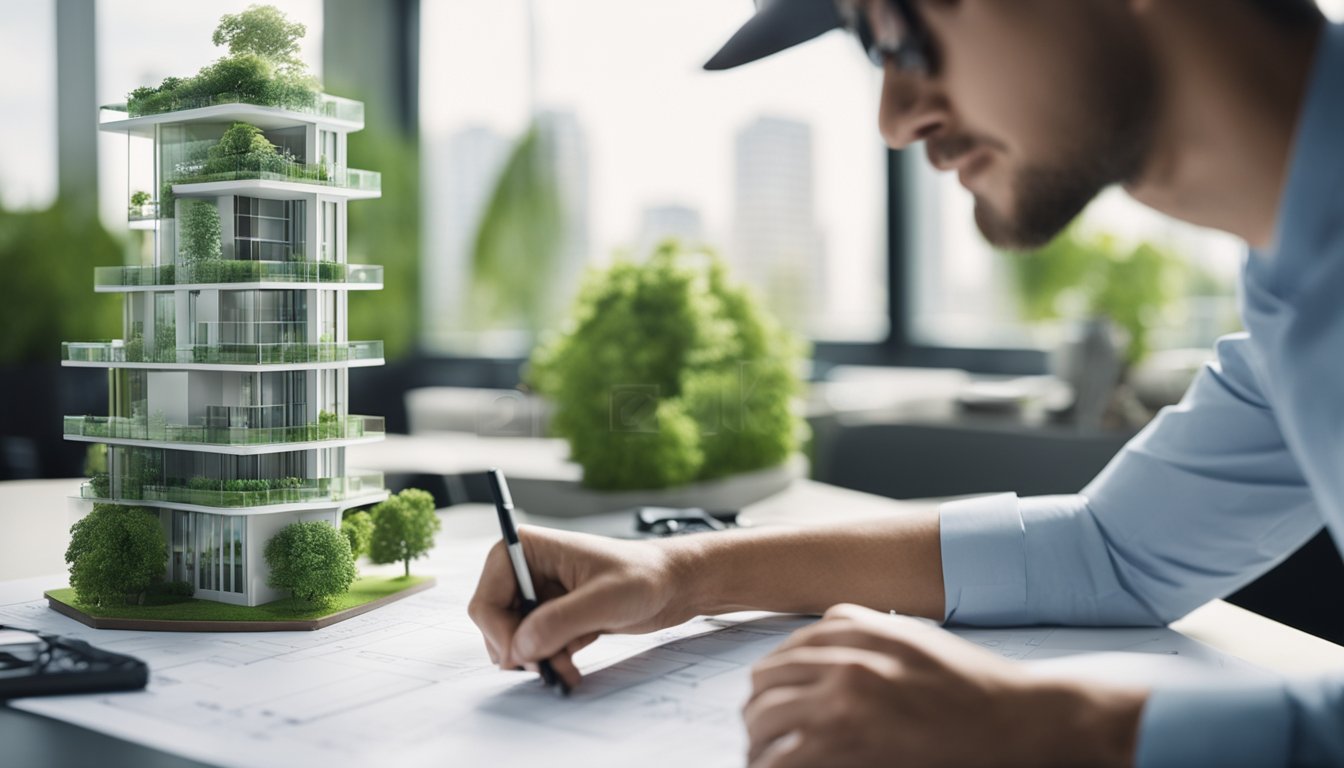Late updated: 08 May 2025 13:05
Written by: Eleanor Hartman
Innovative Green Building Trends In The UK: Shaping Tomorrow’s Sustainable Architecture
In the UK, the construction industry is embracing innovative green building trends that promise to reduce environmental impact and promote sustainability. As the urgency for eco-friendly solutions grows, builders and architects are increasingly adopting materials like bioplastics and hempcrete, which offer biodegradable options. This transformation is not just about materials; it's also about integrating cutting-edge technologies to create energy-efficient infrastructures.

A pivotal shift in building practices is driven by the emphasis on reducing embodied carbon, a significant contributor to the UK's built environment emissions. By opting for advanced technologies such as energy-efficient solar panels and LED lighting, the construction sector is paving the way for greener and more sustainable buildings. This movement is essential for those seeking to minimise the carbon footprint of new constructions and refurbishments.
Our journey into green building innovations reveals more than just current practices; it reflects a profound commitment to developing a sustainable future. Sustainable solutions are becoming the norm, reshaping our approach to designing, building, and living in harmony with the environment. The rise of eco-friendly practices signifies a promising way forward as we continue to innovate and adapt to the changing climate.
Key Takeaways
- UK building trends focus on reducing environmental impact.
- Cutting-edge technologies and materials drive sustainability.
- New practices aim to lower embodied carbon emissions.
Key Drivers of Innovative Green Building Trends in the UK
We explore how the pressing need for decarbonisation, the reduction of carbon emissions, and influential sustainability initiatives like COP26 are fuelling the transformation of the UK's built environment.
The Role of Climate Change and Decarbonisation
Climate change stands at the forefront as a driving force behind green building innovation in the UK. The urgency to address rising temperatures and severe weather patterns has propelled us towards innovative construction practices.
Decarbonisation plays a pivotal role. Our focus is on reducing emissions from both operational and embodied carbon within buildings. As the energy demand in buildings accounts for a significant portion of carbon output, switching to renewable sources and improving energy efficiency have become priorities. We seek to utilise materials and methods that lessen the environmental impact during construction.
Reducing Carbon Emissions in the Built Environment
Reducing carbon emissions in the built environment is critical. The agenda includes rethinking design, construction, and retrofitting processes. Innovative materials, like low-carbon cement and recycled steel, are increasingly part of our arsenal.
Energy consumption reduction strategies include implementing smart energy management systems and maximising natural light. Additionally, the push for net-zero buildings has driven the incorporation of on-site renewable energy technologies such as solar panels and wind turbines, enabling buildings to generate their own energy and reduce dependency on traditional power grids.
The Impact of COP26 and European Sustainability Initiatives
COP26 has caused significant changes in how we approach sustainability in construction. Commitments made during the conference have catalysed further development in green building standards.
The UK's alignment with European sustainable development goals influences our strategies. Europe's stringent regulations encourage practices like energy-efficient design and waste reduction during construction. By incorporating these initiatives, we aim to meet not just regulatory demands but also societal expectations for environmentally responsible development, ensuring our legacy extends beyond simply building structures to fostering sustainable future communities.
Emerging Green Building Innovations and Materials

Innovations in green building are transforming how we construct our built environment. Energy efficiency, recycled materials, and strategies for lowering embodied carbon are pivotal in modern design. As we explore these themes, we identify measures enhancing sustainability and indoor air quality.
Energy Efficiency and Analytics in Modern Construction
Energy efficiency is crucial for sustainable buildings. Smart sensors and IoT-driven systems monitor and adjust energy use in real-time, maximizing efficiency. Advanced HVAC systems and smart lighting contribute significantly to this effort. By integrating these systems, we reduce energy consumption and cut emissions.
Incorporating data analytics allows us to predict energy needs accurately. This empowers building managers to implement energy-saving strategies effectively. The combination of technology and analytics not only reduces operational costs but also the carbon footprint, supporting broader environmental goals.
Adoption of Green and Recycled Building Materials
Green building materials are experiencing a surge in use due to their sustainability and lower environmental impact. Materials such as cross-laminated timber (CLT) and sustainably sourced bamboo are being embraced for their strength and low embodied carbon. Additionally, recycled materials like reclaimed wood and upcycled metal are becoming standard.
The shift towards these materials is driven by both environmental benefits and economic incentives, as they can be more cost-effective in the long term. By prioritising sustainable and recycled options, we support a circular economy and mitigate the impact of construction on natural resources.
Strategies to Reduce Embodied Carbon and Environmental Impact
Embodied carbon, the total emissions from material production and construction processes, is a significant contributor to the carbon footprint. Reducing it requires innovative approaches, such as prefabrication and modular construction. These methods help minimise waste and energy use during construction.
We can also use life cycle assessments to measure the carbon impact of materials and processes. By choosing low-carbon materials and improving construction efficiency, we significantly decrease the environmental impact of buildings from inception to completion.
Enhancing Indoor Air Quality Through Sustainable Design
Indoor air quality is a critical factor in sustainable design, directly affecting occupant health and wellbeing. Using non-toxic, low-emission materials in construction is essential for maintaining high air quality. Ventilation systems are being designed to increase fresh air flow while filtering out pollutants.
Plants and green walls not only enhance indoor air quality but also contribute to aesthetic appeal and occupant comfort. Implementing biophilic design elements promotes a holistic approach, ensuring that our living and working spaces are healthy and sustainable.
Frequently Asked Questions

In the UK, sustainable building design is being shaped by innovative trends, evolving standards, and influential bodies like the UK Green Building Council. Developers are increasingly focused on achieving net zero, while popular certifications continue to guide environmentally friendly practices.
What are the emerging trends in sustainable building design in the UK?
Recent trends include the use of smart technologies and the integration of renewable energy sources. Designers are prioritising energy efficiency to minimise environmental impact. The focus is on materials with low carbon footprints and enhancing the overall comfort and health of building occupants.
How have UK green building standards evolved in recent years?
Standards have become more stringent to align with national sustainability goals. New regulations now emphasise energy performance and reduced carbon emissions. The advancements push for buildings that are not only efficient but also environmentally responsible.
What are the most popular green building certifications currently sought after in the UK?
BREEAM and LEED remain highly sought-after certifications in the UK. These certifications are benchmarks for measuring a building’s sustainability. They address factors such as energy use, water efficiency, and indoor environmental quality.
How is the UK Green Building Council influencing the adoption of new green building practices?
The UK Green Building Council plays a pivotal role by advocating for policy changes and offering guidance. They drive the industry towards greater sustainability through research and education. Their efforts help highlight the economic benefits of green building.
What role does the Green Building Society play in fostering innovation in sustainable construction?
The Green Building Society encourages innovation by funding research and promoting collaboration between architects, developers, and engineers. Their initiatives support the development of new materials and construction methods that advance sustainable building practices.
What steps are UK developers taking to achieve net zero in new construction projects?
Developers are adopting strategies like using renewable energy systems and improving insulation to lower emissions. Attention is given to the life cycle impact of materials. Efficient technologies and sustainable design principles are central to reaching net zero goals.